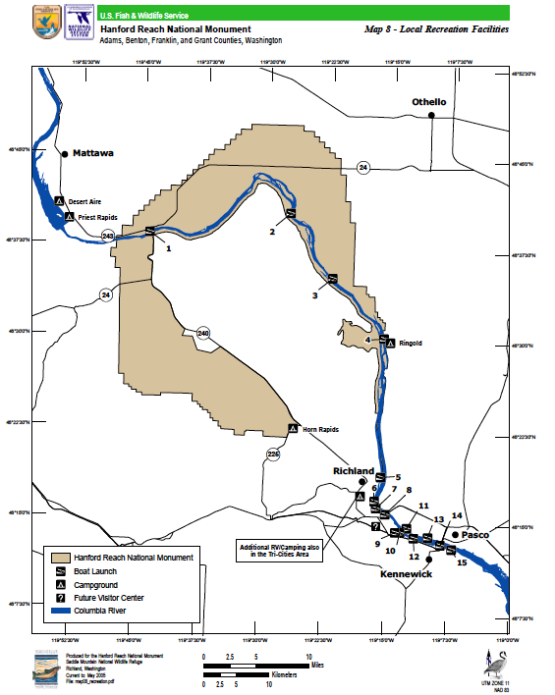At the March, 2014, meeting of the Columbia History of Science Group in Friday Harbor, I gave a talk entitled: “Hanford Reach: Ironic Preservation or the Same Old Mission.” In the talk I discussed the history of the areas at the Hanford Nuclear Site that have become Hanford Reach National Monument. Hanford is unique among all the Manhattan Project sites because it now houses both a national park and a number of Superfund sites. In the talk I trace the scientific histories of the areas that have become the monument.
The image above is from a 1970 presentation given by Dick Foster, of Hanford’s Environmental and Life Sciences Division, to the Washington State Ecology Commission. In the talk, Foster details all the ways that people can live safely, in his estimation, in the midst of Hanford’s plutonium production.
If we fast-forward 30 years to 2000, many of the recreation activities that Foster highlights have been enshrined in the creation of the new national monument. Note the boat launches and campsites on the official map below:
Certainly, the creation of Hanford Reach National Monument should be celebrated. Delicate shrub-steppe habitat has been protected and a variety of sites have had their pollution remediated.
But a quick glance at the two images brings up a question. Where is the radiation in the second image? To be sure, Hanford’s plutonium production has ended. But the site continues to be contaminated by both nuclear waste in storage and pollution that is ambient in the environment. Back in the seventies, when the Hanford Site was thought of as one unit, radiation, recreation and even ecosystems preservation constituted one holistic conversation. Today, at least from the perspective of the national monument, the radiation has disappeared.
As cleanup at the main Hanford Site continues, what will Hanford Reach’s role in remembering the site’s atomic past be?

